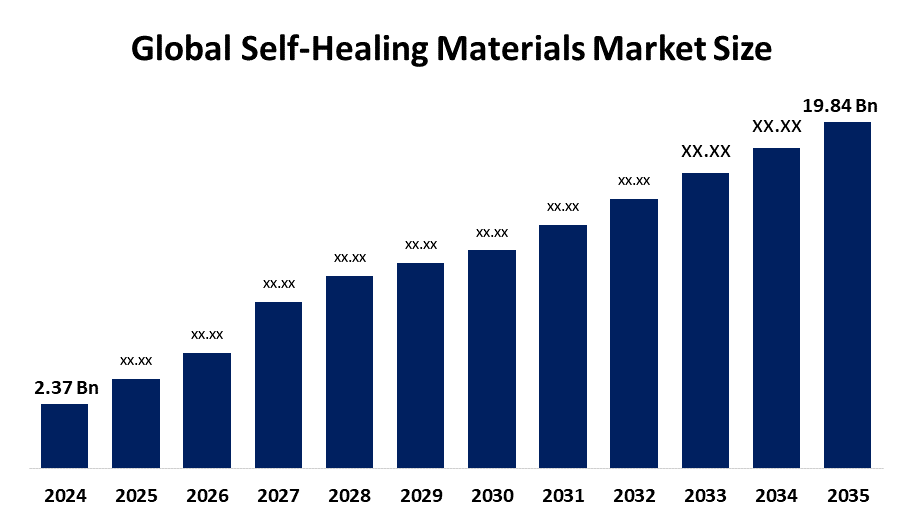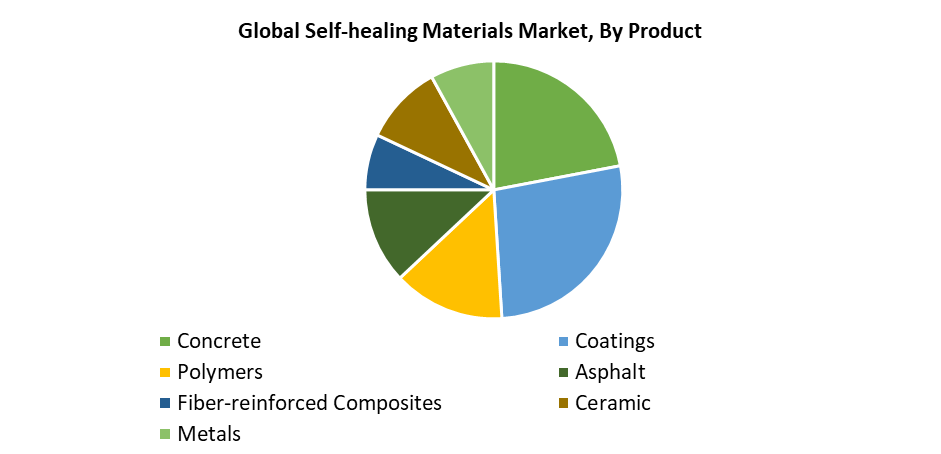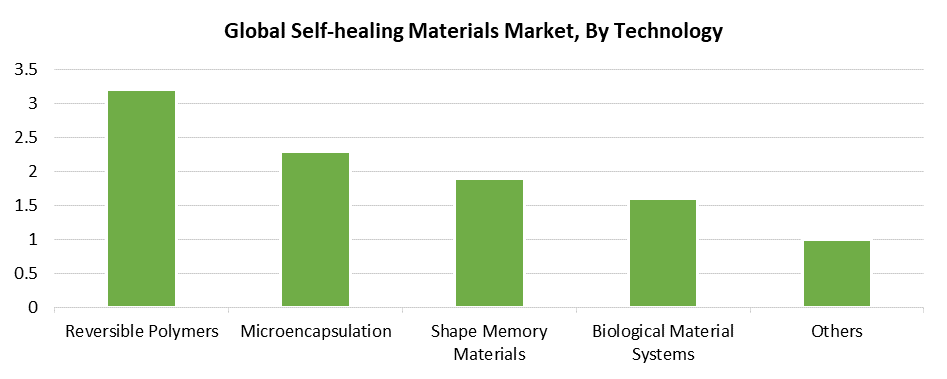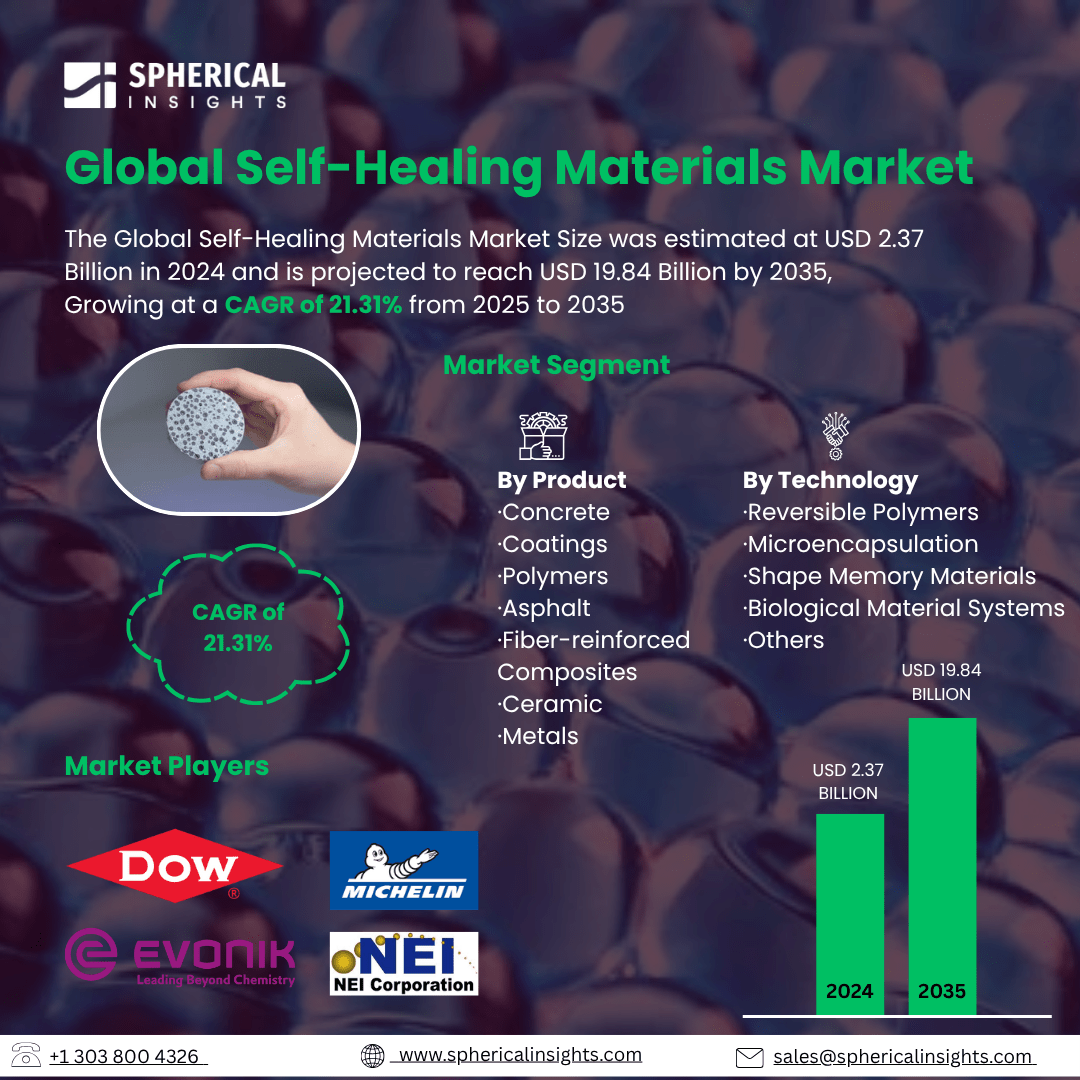Self-healing Materials Market Summary
The Global Self-Healing Materials Market Size was estimated at USD 2.37 Billion in 2024 and is projected to reach USD 19.84 Billion by 2035, Growing at a CAGR of 21.31% from 2025 to 2035. The self-healing materials market is expanding owing to multiple reasons, such as rising demand across sectors like automotive, aerospace, and construction, along with the material's capacity to prolong product life and lower maintenance expenses.
Key Regional and Segment-Wise Insights
- In 2024, the self-healing materials market was dominated by the Asia Pacific region, which accounted for the largest revenue share of 29.73%.
- In terms of product, the coatings segment dominated the market, holding the largest revenue share of 27.36% in 2024.
- In terms of technology, the reversible polymers segment dominated the market in 2024, holding the largest revenue share of 32.19%.
Global Market Forecast and Revenue Outlook
- 2024 Market Size: USD 2.37 Billion
- 2035 Projected Market Size: USD 19.84 Billion
- CAGR (2025-2035): 21.31%
- Asia Pacific: Largest market in 2024

The self-healing materials market consists of companies that develop, produce, and utilize materials that enable structures to repair themselves without human assistance. Utilizing self-healing materials in construction and infrastructure processes propels significant market expansion. The expanding automotive sector uses composites, which supports the overall market growth. The rising wind energy demand creates a necessity for the product. The rising use of self-healing coatings finds its primary driver in their expanding industrial applications in the automotive and aerospace sectors. These coatings find their applications throughout multiple industries such as machinery manufacturing, along with automotive, oil and gas, as well as marine, aerospace, and consumer products.
The growing requirement for materials that can sustain themselves and last longer drives the self-healing materials market because they extend product life and reduce maintenance costs. The latest advances in self-healing polymers and coatings deliver innovative solutions for repairing damages and defending against environmental elements. The incorporation of self-healing materials into smart devices and infrastructure projects fuels market expansion. Self-healing hydrogels show promise for medical uses in tissue engineering and drug delivery systems, providing innovative approaches to wound healing and controlled drug release. Self-healing materials represent a revolutionary advancement that offers numerous advantages for prolonging the durability of products and infrastructure, while simultaneously improving their safety and environmental sustainability. Several opportunities address these challenges through technological progress and strategic partnerships to achieve the full capabilities of self-healing materials across different markets and applications.
Product Insights

The coatings sector led the market in 2024 by generating 27.36% of the total revenue, because of rising interest in sophisticated protection solutions that serve the infrastructure, automotive, and aerospace industries. Self-healing coatings possess the ability to fix small cracks and scratches on their own, which extends surface durability and minimizes maintenance requirements. The advanced technology functions particularly well in corrosion-prone settings such as bridges and marine facilities, along with metal components that experience harsh operational conditions. The application of self-healing coatings enables both cost savings and improved safety because these coatings extend the useful life of protected surfaces. The market for these coatings grows rapidly because organizations recognize the long-lasting performance benefits that matter most in crucial industry sectors.
The concrete segment will achieve the highest CAGR at 21.3% throughout the forecast period. Various government entities, together with private developers, now prioritize building long-lasting highways, bridges, tunnels, and high-rise buildings that resist deterioration and environmental stress, and seismic effects over time. Self-healing concrete offers substantial advantages for durability and maintenance cost savings, and sustainability through its ability to repair cracks automatically and prevent structural deterioration. This makes it a key player in the self-healing materials market. The high expense of maintenance makes this especially essential for projects located in dangerous or inaccessible locations.
Technology Insights

The market in 2024 experienced a leadership position by the reversible polymers segment because it held 32.19% revenue share, which exceeded all other segments. Reversible polymers possess the ability to execute chemical reactions that heal damage. The applications of reversible polymers extend to multiple industry sectors, including automotive and aerospace, electronics, and construction, because these materials deliver extended durability and lifespan benefits. Various industry participants invest in polymers because the self-healing materials market compels them to sustain their competitive position. The growing population of elderly people is expected to drive market growth.
Microencapsulation stands as the leading segment to generate the most substantial CAGR rate of 23.0% throughout the projected timeframe. The process of microencapsulation entails enclosing healing substances inside tiny capsules that distribute themselves through a material matrix. The capsules release healing agents when the material sustains damage, which triggers a chemical reaction that restores cracks and breaches. This technology finds its greatest value within coatings, polymers, and composites, where self-healing capabilities need to function independently from human intervention. The technology attracts manufacturers who want durable products along with decreased maintenance costs because it works with different matrices and integrates seamlessly into existing production processes.
Regional Insights
The North American self-healing materials industry experiences consistent growth because industries such as infrastructure, automotive, aerospace, and electronics require advanced materials. The region contains important market leaders that make significant investments in innovation to drive the development and promotion of self-healing technologies. Self-healing materials represent a key focus for North American automotive, aerospace, and electronics sectors because they help products last longer while reducing maintenance expenses and improving safety. The market experiences growth because material science research institutions in the United States and Canada work together with companies to develop new technologies.
U.S. Self-healing Materials Market Trends
The North American U.S. market for self-healing materials held a significant revenue share during 2024 because of its thriving aerospace industry, together with wind energy and automotive sectors. These materials find increasing use for making components and structures that repair themselves, which reduces maintenance costs and decreases downtime. These materials enable products to heal themselves, which leads to better reliability and extended product lifespans. The increased efficiency proves essential for industries that require maximum safety and durability. The growing markets benefit from self-healing materials since they represent a substantial technological advancement.
Asia Pacific Self-healing Materials Market Trends
The Asia Pacific region maintained its market leadership position by holding 29.73% of the total revenue in 2024 for self-healing materials. The robust regional growth stems primarily from the combination of intense industrial development and dense populations, together with rising foreign investments in the automotive and electronics sectors. Self-healing technology adoption will accelerate because of local-global stakeholder partnerships combined with strengthened regulatory frameworks. This development will transform the area into a key expansion market throughout the upcoming years. The construction industry stands to gain from the growing economic significance of Southeast Asian countries, including China, India, Indonesia, and Vietnam. A massive customer base, together with an affordable workforce and abundant natural resources, and a rising middle-class population, drives this growth.
Europe Self-healing Materials Market Trends
The self-healing materials market in Europe represents a vital growth opportunity because the region pursues sustainability goals together with automotive progress and innovative construction techniques. The demand for self-healing coatings, together with composites and polymers, increases because EU regulations seek to extend material life while reducing environmental impact and promoting circular economy practices. The aerospace and automotive industries across Europe contribute to market growth through their active innovation efforts and material adoption. The market expansion will be driven by self-healing materials because they demonstrate similar characteristics, including durability, thermal stability together with abrasion resistance, stiffness, strength, along with additional features. The market throughout Europe expands because major industry players operate there and because more people understand the benefits of lowering maintenance costs while extending material lifespans.
Key Self-healing Materials Companies:
The following are the leading companies in the self-healing materials market. These companies collectively hold the largest market share and dictate industry trends.
- The Dow Chemical Company
- Evonik Industries Corporation
- Huntsman International LLC
- Michelin Group
- NEI Corporation
- Covestro AG
- MacDermid Autotype Ltd.
- High Impact Technology, LLC
- Akzo Nobel N.V.
- BASF SE
- Others
Recent Developments
- In October 2023, U. S. Steel Corporation and DuPont introduced COASTALUME™, which represents North America’s initial GALVALUME® product specifically engineered and backed for use in coastal areas. Two iconic American industry leaders teamed up to develop the COASTALUME™ product, which blends U. S. Steel’s GALVALUME® strength and self-healing features with DuPontTM Tedlar® PVF film barrier protection against saltwater corrosion, UV damage, and cracking and impact resistance.
- In August 2022, RODIM®, under BASF branding, launched its invisible Thermoplastic Polyurethane Paint Protection Film (PPF) for the Asia Pacific market. The product delivers all-encompassing protection for vehicle paint finishes throughout its long lifespan. The product demonstrated outstanding protection against environmental factors by passing a 3,000-hour accelerated UV test, which included high temperature and extended sunlight exposure. The RODIM TPU PPF guards vehicles from surface staining caused by tree sap, insects, bird droppings, acid rain, and other environmental contaminants.
Market Segment
This study forecasts revenue at global, regional, and country levels from 2020 to 2035. Spherical Insights has segmented the self-healing materials market based on the below-mentioned segments:
Global Self-healing Materials Market, By Product
- Concrete
- Coatings
- Polymers
- Asphalt
- Fiber-reinforced Composites
- Ceramic
- Metals
Global Self-healing Materials Market, By Technology
- Reversible Polymers
- Microencapsulation
- Shape Memory Materials
- Biological Material Systems
- Others
Global Self-healing Materials Market, By Regional Analysis
- North America
- Europe
- Germany
- UK
- France
- Italy
- Spain
- Russia
- Rest of Europe
- Asia Pacific
- China
- Japan
- India
- South Korea
- Australia
- Rest of Asia Pacific
- South America
- Brazil
- Argentina
- Rest of South America
- Middle East & Africa
- UAE
- Saudi Arabia
- Qatar
- South Africa
- Rest of the Middle East & Africa






